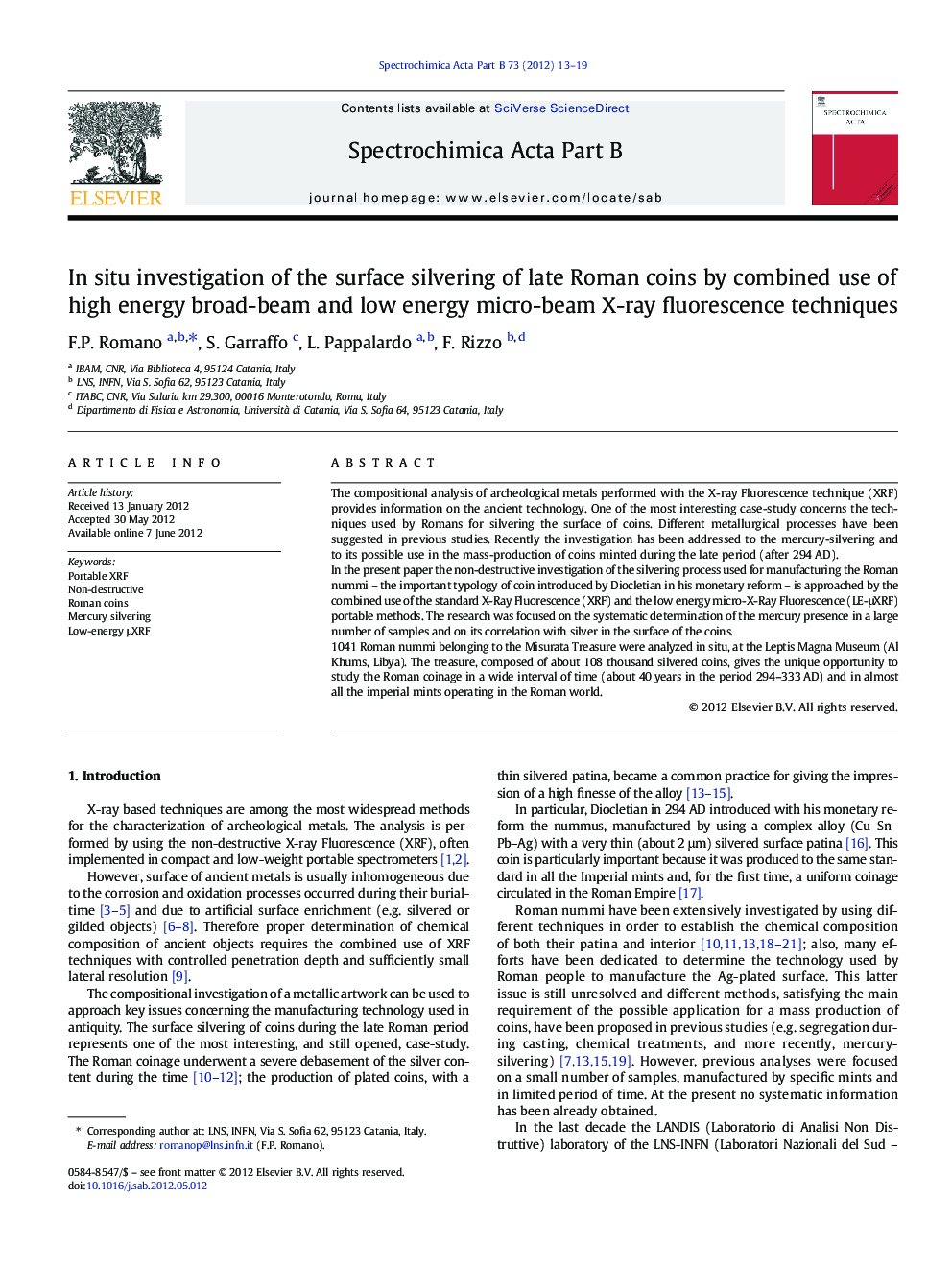| Article ID | Journal | Published Year | Pages | File Type |
|---|---|---|---|---|
| 1240037 | Spectrochimica Acta Part B: Atomic Spectroscopy | 2012 | 7 Pages |
The compositional analysis of archeological metals performed with the X-ray Fluorescence technique (XRF) provides information on the ancient technology. One of the most interesting case-study concerns the techniques used by Romans for silvering the surface of coins. Different metallurgical processes have been suggested in previous studies. Recently the investigation has been addressed to the mercury-silvering and to its possible use in the mass-production of coins minted during the late period (after 294 AD).In the present paper the non-destructive investigation of the silvering process used for manufacturing the Roman nummi – the important typology of coin introduced by Diocletian in his monetary reform – is approached by the combined use of the standard X-Ray Fluorescence (XRF) and the low energy micro-X-Ray Fluorescence (LE-μXRF) portable methods. The research was focused on the systematic determination of the mercury presence in a large number of samples and on its correlation with silver in the surface of the coins.1041 Roman nummi belonging to the Misurata Treasure were analyzed in situ, at the Leptis Magna Museum (Al Khums, Libya). The treasure, composed of about 108 thousand silvered coins, gives the unique opportunity to study the Roman coinage in a wide interval of time (about 40 years in the period 294–333 AD) and in almost all the imperial mints operating in the Roman world.
► Custom-building of a high energy broad-beam and a low energy micro-beam XRF ► In situ analysis of the silvering methods in late Roman nummi with plated surfaces ► The broad-beam XRF was applied for the detection of mercury traces in the coin alloy. ► The low energy micro-XRF was used to scan the surface patina of the coins. ► The correlation between mercury and silver at the coin surface was evidenced.
